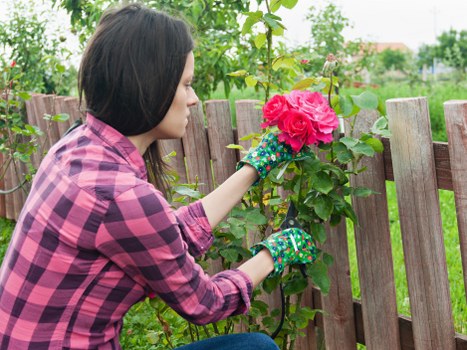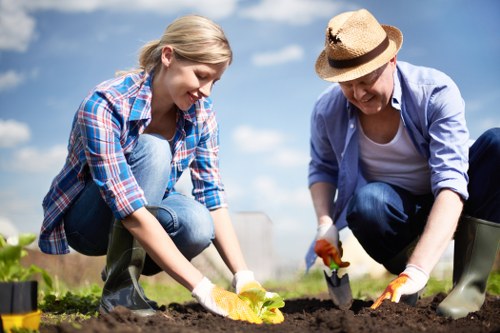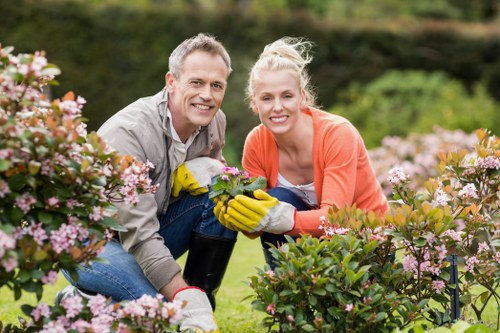Gardeners Maryland: Cultivating Green Spaces Across the State

Maryland is a haven for gardening enthusiasts, boasting a diverse climate that supports a wide range of plants and flowers. Whether you're a seasoned gardener or just starting out, Maryland offers the perfect environment to nurture your green thumb. From the lush landscapes of Western Maryland to the coastal gardens of the Eastern Shore, there's something for every gardener in the Old Line State.
The state's varied topography and rich soil provide excellent conditions for growing everything from vibrant annuals to hardy perennials. Additionally, Maryland gardeners benefit from a supportive community that offers resources, events, and educational opportunities to help them succeed.
In this comprehensive guide, we’ll explore the best practices for gardening in Maryland, highlight some of the most popular plants, and provide tips on how to make the most of your gardening experience in this beautiful state.

Understanding Maryland’s Climate
Maryland's climate plays a crucial role in determining what plants thrive in the region. The state experiences a mix of humid subtropical and humid continental climates, depending on the area. This means gardeners must consider factors like temperature, rainfall, and seasonal changes when planning their gardens.
In the eastern part of Maryland, including the Eastern Shore, winters are milder, and summers are hot and humid. This region is ideal for growing a variety of vegetables, herbs, and ornamental plants. Western Maryland, with its cooler temperatures and shorter growing seasons, is perfect for plants that can withstand cooler climates and require less heat.
Understanding these climatic differences is essential for selecting the right plants and ensuring they thrive throughout the year.

Top Plants for Maryland Gardens
Choosing the right plants is the foundation of any successful garden. Maryland gardeners have a plethora of options, thanks to the state's favorable growing conditions. Here are some top choices:
- Hydrangeas: These popular flowering shrubs thrive in Maryland's climate, offering beautiful blooms in various colors.
- Hostas: Ideal for shaded areas, hostas provide lush foliage and a range of sizes and colors.
- Tomatoes: With the right care, tomato plants flourish in Maryland, producing bountiful harvests.
- Roses: Maryland's gardens often feature stunning rose varieties that add elegance and fragrance.
- Lavender: Perfect for sunny spots, lavender not only looks great but also repels pests.
These plants are well-suited to Maryland's soil and climate, making them excellent choices for both novice and experienced gardeners.

Seasonal Gardening Tips
Gardening in Maryland requires adapting to the changing seasons. Here are some tips to help you maintain a thriving garden year-round:
Spring
- Start Seeds Indoors: Begin planting seeds indoors to get a head start on the growing season.
- Prepare the Soil: Test and amend your soil to ensure it has the necessary nutrients.
- Plant Early Crops: Vegetables like peas and lettuce can be planted early in the spring.
Summer
- Water Consistently: Maintain regular watering schedules to keep plants healthy.
- Mulch: Use mulch to retain moisture and suppress weeds.
- Prune and Maintain: Regular pruning helps plants grow strong and reduces disease risk.
Fall
- Harvest: Gather your crops before the first frost.
- Plant Perennials: Add perennials to your garden for vibrant blooms next year.
- Clean Up: Remove dead plants and debris to prevent pests and diseases.
Winter
- Plan Ahead: Use the winter months to plan your garden for the upcoming year.
- Protect Plants: Use coverings to protect sensitive plants from frost.
- Tool Maintenance: Clean and store your gardening tools properly.

Local Gardening Resources in Maryland
Maryland offers a wealth of resources for gardeners looking to improve their skills and connect with others. Here are some key resources:
- Maryland Master Gardener Program: Offers education and support for gardening enthusiasts across the state.
- Local Nurseries: Visit local nurseries to find plants that are well-suited to Maryland's climate.
- Community Gardens: Join a community garden to share resources and gain insights from fellow gardeners.
- Extension Services: Maryland’s Cooperative Extension provides valuable information on gardening techniques and pest management.
- Gardening Clubs: Participate in gardening clubs to stay updated on the latest trends and events.
Leveraging these resources can enhance your gardening experience and help you achieve a beautiful, thriving garden.
Top 15 Areas for Gardeners Near Maryland
- Washington, D.C.: Just north of Maryland, D.C. offers numerous public gardens and community gardening initiatives.
- Baltimore: Known for its rich horticultural heritage, Baltimore has many parks and botanical gardens.
- Frederick: A charming city with a strong gardening community and beautiful arboretums.
- Silver Spring: Offers urban gardening spaces and access to a variety of plant resources.
- Annapolis: The capital city near Maryland's Chesapeake Bay, perfect for water-loving plants.
- Rockville: Features well-maintained public gardens and active gardening clubs.
- Towson: Home to Towson University, which provides extensive gardening programs and resources.
- Bowie: Offers community gardens and numerous green spaces for gardening enthusiasts.
- Gaithersburg: Known for its urban gardens and gardening workshops.
- Columbia: A planned community with beautifully maintained public gardens and green initiatives.
- Silver Spring: Offers urban gardening spaces and access to a variety of plant resources.
- Bel Air: A rural area with ample space for large gardens and diverse plantings.
- Hagerstown: Features community gardening projects and access to local nurseries.
- Salisbury: Ideal for gardeners interested in coastal plant varieties and maritime gardening.
- Easton: Known for its scenic gardens and agricultural festivals.
Sustainable Gardening Practices in Maryland
Embracing sustainability in your garden not only benefits the environment but also ensures long-term productivity. Here are some sustainable practices suitable for Maryland gardens:
- Composting: Recycle kitchen and garden waste to create nutrient-rich soil for your plants.
- Rainwater Harvesting: Collect and use rainwater to reduce dependence on municipal water sources.
- Native Plants: Incorporate native plant species that are well-adapted to the local climate and require less maintenance.
- Organic Pest Control: Use natural methods to manage pests, reducing the need for chemical pesticides.
- Crop Rotation: Rotate plant families in your garden to prevent soil depletion and reduce disease risks.
Implementing these practices can lead to a healthier, more resilient garden.
Gardening Events and Workshops in Maryland
Maryland hosts a variety of gardening events and workshops throughout the year, providing opportunities for learning and community engagement:
- Maryland Garden Show: An annual event showcasing the latest in gardening trends, tools, and plant varieties.
- Workshops at the Brookside Gardens: Offer classes on topics like landscape design, plant care, and sustainable gardening.
- Community Garden Days: Events that bring local gardeners together to share knowledge and resources.
- Extension Services Seminars: Educational sessions on pest management, soil health, and more.
- Plant Sales and Exchanges: Opportunities to buy, sell, or trade plants with fellow gardeners.
Participating in these events can enhance your gardening skills and expand your network of gardening friends.
Challenges Faced by Maryland Gardeners
While gardening in Maryland is rewarding, gardeners may encounter certain challenges:
- Pests and Diseases: Common issues include aphids, slugs, and fungal infections that can damage plants.
- Weather Extremes: Heavy rains, droughts, and unexpected frosts can impact garden health.
- Soil Quality: Ensuring the soil has the right balance of nutrients is essential for plant growth.
- Weed Management: Controlling weeds requires consistent effort to prevent them from overtaking your garden.
- Limited Space: Urban gardeners may struggle with limited space and need to utilize vertical gardening or container gardening techniques.
Addressing these challenges with proactive strategies can lead to a more successful gardening experience.
Innovative Gardening Techniques in Maryland
Maryland gardeners are increasingly adopting innovative techniques to enhance their gardening practices:
- Vertical Gardening: Maximizes space by growing plants upwards on structures or trellises, ideal for urban settings.
- Hydroponics: Growing plants without soil, using nutrient-rich water solutions, suitable for indoor gardening.
- Permaculture: Designing gardens that mimic natural ecosystems, promoting sustainability and biodiversity.
- Raised Bed Gardening: Improves soil drainage and allows for better control over soil quality.
- Smart Gardening: Utilizing technology like automated watering systems and gardening apps to optimize plant care.
These techniques offer new ways to cultivate gardens efficiently and sustainably.
Conclusion: Embrace Gardening in Maryland
Maryland presents a fertile ground for gardeners of all levels, offering a diverse climate, rich soil, and a supportive community. By understanding the local climate, selecting the right plants, and implementing sustainable practices, you can create a thriving garden that enhances your living space and contributes to the environment.
Whether you're gardening in the bustling urban areas or the serene rural landscapes, Maryland provides the perfect backdrop for cultivating beautiful and productive green spaces. Embrace the gardening opportunities the state has to offer and watch your garden flourish.
Frequently Asked Questions
1. What are the best times to plant in Maryland?
The best times to plant in Maryland are in the early spring after the last frost and in the late summer for fall crops. These times take advantage of the optimal growing conditions for most plants in the region.
2. How can I protect my plants from Maryland's pests?
Protect your plants by using natural pest control methods such as introducing beneficial insects, using organic pesticides, and maintaining garden cleanliness to reduce pest habitats.
3. What native plants are recommended for Maryland gardens?
Some recommended native plants for Maryland include Black-eyed Susans, Purple Coneflowers, Maryland Goldenrod, and Virginia Sweetspire. These plants are well-suited to the local climate and support biodiversity.
4. How do I improve soil quality in my Maryland garden?
Improve soil quality by adding organic matter like compost, using mulch to retain moisture and prevent weeds, and conducting soil tests to determine necessary amendments for nutrient balance.
5. Are there community gardening opportunities in Maryland?
Yes, Maryland has numerous community gardens where gardeners can collaborate, share resources, and gain support from fellow gardening enthusiasts. Check local listings or contact Maryland's Cooperative Extension for more information.


